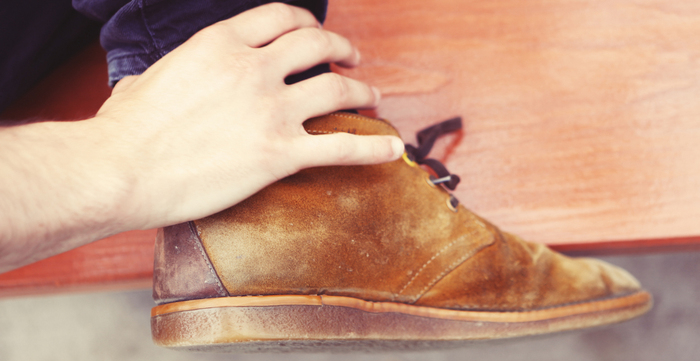
Feel better faster. Get care today.
From the clinic or your couch. Find high quality, same-day urgent care for you and your kids. Book an urgent care visit today.

Ankle sprains occur when the ankle rolls one direction while the foot moves in the other. The ligaments stretch excessively or tear as a result of this movement, which causes the sprain. If you twisted your ankle in this fashion, you may have a sprain. If you’re experiencing pain but the ankle didn’t twist like this, it’s probably a different type of injury. Pain from a sprain begins immediately after the injury, so you shouldn’t have any question as to when or how it happened.
Sprains and strains are easily confused. A sprain is the result of a traumatic injury, like slipping and falling. A strain is the result of overuse of a muscle or tendon. If you fell on the injured area and felt immediate pain, you may have sprained it. If you sustained a minor fall in the course of a long day of strenuous activity and don’t notice pain until the morning, it’s more likely that you’re dealing with a strain instead.
With
some ankle sprains, you will hear a pop as you fall. You may also feel
the tear as it moves across the ligament. This doesn’t always happen
though, so a lack of this popping noise isn’t a sure indicator that you
don’t have a sprain. If you’re experiencing severe pain, the noise you
heard might indicate a broken bone rather than a sprain. You should seek
immediate medical attention for any injury that causes extreme levels
of pain.
A sprained
ankle usually begins to swell immediately after the injury. The area
will look and feel puffy. When you touch it gently you might notice it
feels hot. You may also see bruising or redness at the injury site,
though sprains do not always bruise. As you gently touch the injury, you
should always feel your hand. If your ankle or foot is numb, this is a
sign of a very severe sprain or fracture and requires immediate medical
attention.
It’s difficult
to walk with a sprained ankle. When you try to put weight on this foot,
you will feel pain. The ankle may also wobble from side to side and
refuse to support your weight. This is a result of the torn ligaments.
The harder it is to walk and stand, the more severe your injury is.
If you believe that you’ve sprained your ankle, it’s important to see a doctor as soon as you can. The doctor will assess the severity of the injury, help you manage the pain, and assist with properly immobilizing the ankle so it can heal quickly and efficiently.
An ankle sprain occurs when the ankle rolls in one direction while the foot moves in the other, causing the ligaments to stretch excessively or tear.
A sprain is a traumatic injury often caused by a fall, while a strain is caused by overuse of a muscle or tendon.
Signs of a sprained ankle include immediate swelling, possible bruising or redness, and difficulty walking due to pain.
If you suspect you have a sprained ankle, you should seek medical attention. The doctor can assess the severity of the injury, manage the pain, and assist with properly immobilizing the ankle.
No, a sprained ankle does not always bruise. However, swelling and pain are common symptoms.
Swelling and discoloration of the ankle after a fall are common signs of a sprain. The area may look and feel puffy, and you might notice it feels hot. Bruising or redness may also occur, though not always.
If your foot or ankle is numb after a fall, this could be a sign of a very severe sprain or fracture. This requires immediate medical attention.
If you believe you've sprained your ankle, you should see a doctor as soon as possible. The doctor can assess the severity of the injury, help manage the pain, and assist with properly immobilizing the ankle to promote quick and efficient healing.

From the clinic or your couch. Find high quality, same-day urgent care for you and your kids. Book an urgent care visit today.